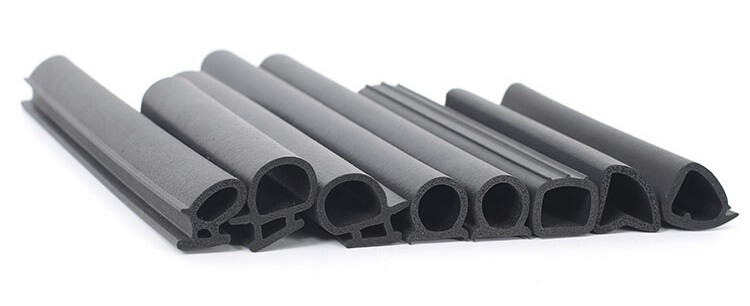The main technological process of extrusion sealing strip manufacturing
Table of Contents
What is an extrusion seal?

There are countless places where rubber sealing strips are used in daily life. The rubber material has certain physiological inertia, so it can achieve adaptability in any environment and under special circumstances. Many buyers have doubts about the rubber sealing strip’s material and processing technology and do not understand the material’s production process and characteristics. So how exactly is the extrusion sealing strip processed?
The performance of Extruded Seals
The rubber sealing strip is a strip-shaped product. It has excellent performance, mainly high and low-temperature resistance and good physiological inertia, which can be used normally under different environmental conditions.
Long-term use does not affect the strength of deformation and rebound, and it has excellent resistance to ozone, ultraviolet rays, and aging. But there is no conflict with any substance for green environmental protection.
According to different use environments and product performance, the selected materials are different. If you want to find the right material for your product, you can contact us. We will find the most suitable material for your product.
The role of extrusion sealing strip
- Absorb, reduce vibration
- Noise isolation, waterproof, dust, etc. penetrate into the interior to ensure comfort
- Prevent heat from intruding into the room and intrusion of polluted gas
- Fill the gap
- Prevent corrosive media from eroding body panels
- Provide movement channels for moving parts
- Make up for errors in sheet metal manufacturing and assembly
Rubber sealing strip extrusion production process
- Rubber mixing: The mixing rubber raw materials are pressed into a rubber extrusion material with uniform thickness layer by layer in a double-stick rubber mixing machine.
- Extrusion molding: install the mold on the head of the rubber extruder. The compounded rubber is divided into shapes of the same size and length, which is convenient for feeding from the inlet of the extruder. Then feed through a rubber extruder to extrude a soft rubber sealing strip.
- High-temperature vulcanization: put it in the oven for secondary vulcanization to remove the peculiar smells.
4. Follow-up processing: the rest is to cut, bond, and other follow-up processing according to the length you need. Then package it according to your requirements and send it to your hands.
The effect and functional problems of the finished product are the same. For rubber product manufacturers, the extrusion defect is that the strip product needs to be cut off and has a cross-section. The advantage is that the product mold cost and process efficiency are high. Different products can be selected according to different structures. If you still do not understand, contact us, and we can provide you with a one-stop solution.


